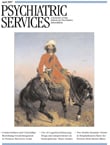This book, The Psychology of Religious Fundamentalism, is a work of disciplined scholarship that not only examines the reality of religious fundamentalism from a psychological perspective but also provides richly detailed histories of the development of a number of fundamentalist religious traditions. Great attention is given to the multiple reasons why fundamentalism can take such hold of the lives of its adherents. Given the current atrocities that are being perpetrated worldwide by people who are driven by strict adherence to fundamentalist faith systems, the book could not be more timely or relevant in attempting to understand the mind-set of sects and groups that are being discussed in the nightly national and world news reports.
The book's three authors are doctoral-level social psychologists, all of whom have had personal experience living in religious families as youths. The book opens with a critique of much of the previous social science research that has been done on fundamentalism, and then the authors propose an alternative method of penetrating and understanding fundamental sects that is called "intratextuality."
What makes fundamentalists most different from more mainstream adherents of various creeds is that each fundamentalist sect relies on one unique text, and only one text, as having the authority to provide meaning, a worldview, or a behavioral code from which his or her life can be lived. All meaning and truth are derived intratextually from this source. For fundamentalist Christians that text would be the Bible, for Shia Muslims—the most fundamental sect of Islam—it is the Quran, for the Amish it is the Ordnung, a codified set of behavioral prescriptions and proscriptions drawn from the Bible. This intratextual perspective is largely a flight from or a stance against the modern world and secular influences. By comparison, nonfundamentalist sects view the world in an intertextual way, where there is not just one locus of authority but rather multiple sources of meaning and truth and multiple texts—such as science, cultural beliefs, literature, and secular law—that can be used to create a worldview and a sense of meaning and purpose.
The authors contend that modern social science has failed to recognize the dynamic of intratextuality and to explore and understand the historical developmental contexts of fundamentalist sects. Scientists have attempted to use laboratory-based empirical tools with individuals who are fundamentalist believers, rather than taking a perspective driven more by social psychology. The authors argue that these failures have greatly undercut the value of much existing research in this area. Via the method of intratexuality, the book explores in great detail the development of Protestant fundamentalism, the Pentecostal Church of God, serpent-handling sects, the Amish, and finally, fundamentalist Islam, and it highlights the core similarities in these groups that appear to be so disparate on the surface.
Fundamentalist worldviews would not flourish if they didn't have inherent power and value to their adherents. The authors examine how each sect becomes powerful to adherents and point out the perceived psychological benefits. Interestingly, throughout the text, the authors feel the need to preemptively deny that they are apologists for fundamentalism because they explicate its usefulness to its adherents. Fundamentalism thrives in our chaotic world because it provides a unifying philosophy of life; everything is contained in one text, with no need to struggle for truth and discernment. Fundamentalism provides a sense of coherence; the one text does not contradict itself. It provides absolutes without the need to struggle with moral relativism or ethical dilemmas. As long as adherents follow the sacred text they are assured of a coherent life in a complex and confusing world. Fundamentalism provides a central locus of meaning for its participants, who share a sense of abhorrence of the modern world with its multiple temptations and distractions. This meaning is derived from living a shared sense of purpose, with clear-cut, absolute values and the certainty of what is right and what is wrong. Fundamentalism allows for a sense of efficacy and purpose; as long as one is doing God's will or being a dutiful a member of a community that is dedicated to God's will, one does not need to question one's competency or the worth of one's life.
This reader found the work to be most satisfying when it was specifically exploring individual fundamentalist systems. The chapter on fundamentalist Islam was not only extremely interesting but of immeasurable value in gaining an understanding of the mind-set of the Shia Muslims. In their world there is no distinction between the sacred and the secular. All is sacred, and a shared goal is to convert the world to this sacred perspective. The authors brilliantly use the case of the death sentence issued by the Ayatollah Khomeini against the author Salman Rushdie to illustrate the perspective of fundamentalist Islam. Because there is no distinction between the sacred and the secular in the Shia worldview, Rushdie's novel could not just be ignored as a secular annoyance. It was viewed as blasphemous disrespect to the Prophet Muhammad, and the author deserved death. In the worldview of the Shia Muslims, blasphemy is a crime even worse than murder. Equally interesting was the greatly detailed history of the development of the Amish culture in the United States and its perspective that places far more value on the community than the individual.
This is a work of great value not only for students of religion and the social sciences but for anyone who is trying to gain a better understanding of the worldview driving some of the terrorist actions in the Middle East.

